Pre-phylloxera & Vintage cognacs “showing considerable growth” according to industry expert
Fine wine brokers turn to spirits as Trump duty levies bite
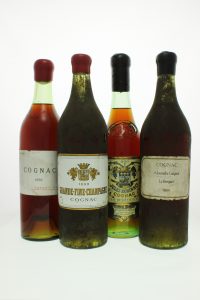 David Baker, Managing Director at Hermitage Cognacs, one of the UK’s leading suppliers of fine and rare cognacs, has noted a real upsurge in interest, demand and sales for Pre-phylloxera era cognacs.
David Baker, Managing Director at Hermitage Cognacs, one of the UK’s leading suppliers of fine and rare cognacs, has noted a real upsurge in interest, demand and sales for Pre-phylloxera era cognacs.
Phylloxera, the aphid which devastated the vineyards of Europe – including its most famous regions of Bordeaux and Burgundy – from around 1863, led to vines being grafted onto American rootstocks which were resistant to it. There was considerable debate In the decades that followed and into the 20th Century as to whether quality of the wines produced after the vine-grafting was quite as high.
Brandies produced from Pre-phylloxera vines are increasingly rare and, according to Baker, becoming very sought after in recent years. The threat to exports of French wines, and single malt Scotch whiskies, to the US due to the US Government’s latest duty tariffs is also encouraging dealers and collectors to look for other liquids to buy.
“As well as our established market in single-estate cognacs of the late 20th and early 21st Centuries, we’re now seeing a real surge in demand for cognacs from the mid and early 20th century, even some from the nineteenth century and before the Phylloxera. Many merchants are worried about the impact of US duty on imports of champagne, wine and whisky into America, and are looking to other spirits to replace that. At the moment cognacs seem to have escaped the duty hikes. In Asia too, especially Singapore, we’re getting greater interest for the oldest Premier cru vintages.
Baker continues: “Many of the Pre-phylloxera cognacs we have supplied this year come from very old estates, some where cognac production may have ceased years ago. The interest and historic value they hold is driving demand, and we are having to scour the cellars of the region for more rare bottles.
“Moreover, modern cognacs are made on bigger stills where volume is important, some of the finest cognacs come from the last half of the nineteenth and first half of the twentieth centuries where family producers had little pressure to produce high cognac volumes.”
Hermitage Cognacs have a great pedigree in supplying very old cognacs – just two years ago an 1805 Cognac Massougnes supplied by them sold through Hedonism Wines in London for over £220,000.
Find out more at hermitagecognac.com

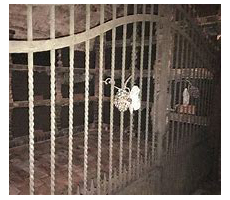 Not every cognac house has a Paradis – a designated area in the innermost recess of their cellar – but those that exist are steeped in history. Back in the early eighties, having discovered a cognac which I really liked, I went to the Charente to try and discover its origin. I ended up in Cognac’s twin town, Jarnac, standing in front of an elegant wrought iron gate with an imposing key. Behind it were about 100 very dusty bonbonnes, each with a chalk board describing what was in them. What an eye opener – they contained cognacs which dated from as early as 1805. Each bonbonne (a sort of demijohn in a basket), contained about 30 litres of prized spirits and was sealed with wax to maintain its superior qualities.
Not every cognac house has a Paradis – a designated area in the innermost recess of their cellar – but those that exist are steeped in history. Back in the early eighties, having discovered a cognac which I really liked, I went to the Charente to try and discover its origin. I ended up in Cognac’s twin town, Jarnac, standing in front of an elegant wrought iron gate with an imposing key. Behind it were about 100 very dusty bonbonnes, each with a chalk board describing what was in them. What an eye opener – they contained cognacs which dated from as early as 1805. Each bonbonne (a sort of demijohn in a basket), contained about 30 litres of prized spirits and was sealed with wax to maintain its superior qualities.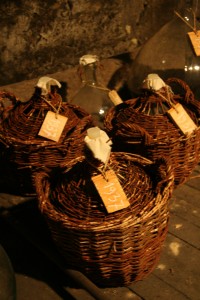 Many cognac families select a few of their finest cognacs for storage in the Paradis. The point when a cognac has gained all the benefit it can from the wood depends on many factors but ultimately, it is when the cellar master decides that it has reached its optimum quality. At this stage the cognac is put into glass bonbonnes and sealed so that the generations of gentle maturation in the barrel are preserved. A cognac that has lasted in oak without deterioration for perhaps 60, 70, 80 or even 90 years is going to be good, very good and will have developed the much sought after
Many cognac families select a few of their finest cognacs for storage in the Paradis. The point when a cognac has gained all the benefit it can from the wood depends on many factors but ultimately, it is when the cellar master decides that it has reached its optimum quality. At this stage the cognac is put into glass bonbonnes and sealed so that the generations of gentle maturation in the barrel are preserved. A cognac that has lasted in oak without deterioration for perhaps 60, 70, 80 or even 90 years is going to be good, very good and will have developed the much sought after 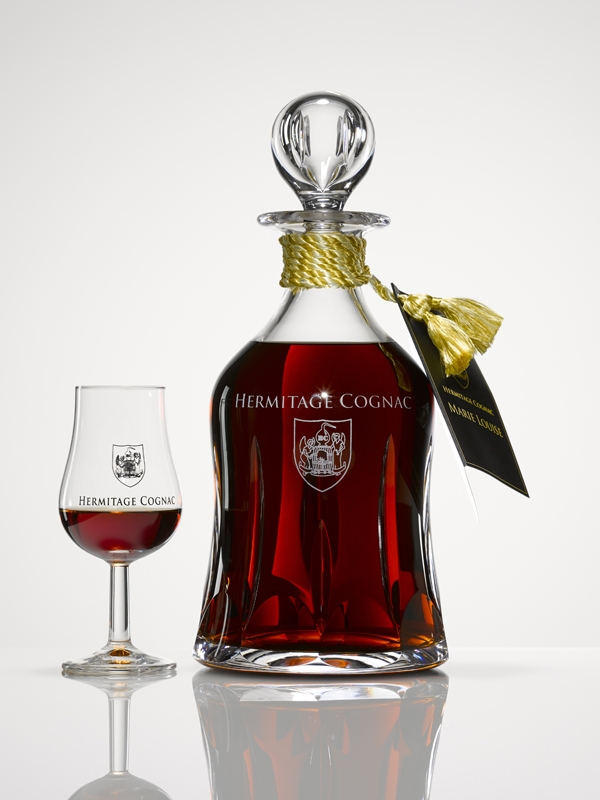
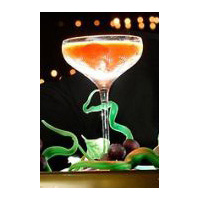 Vintage cocktails, made from rare and very old vintage cognac, are trending …… they are also extremely expensive! Interest began with the World’s most expensive cocktail which was created in 2012 and sold for £5500. It contained a 1788 Cognac, 1770 Liqueur and 1860 Orange Curacao. Similar concoctions can now be bought at the very best bars in the
Vintage cocktails, made from rare and very old vintage cognac, are trending …… they are also extremely expensive! Interest began with the World’s most expensive cocktail which was created in 2012 and sold for £5500. It contained a 1788 Cognac, 1770 Liqueur and 1860 Orange Curacao. Similar concoctions can now be bought at the very best bars in the  world for similarly handsome prices.
world for similarly handsome prices.